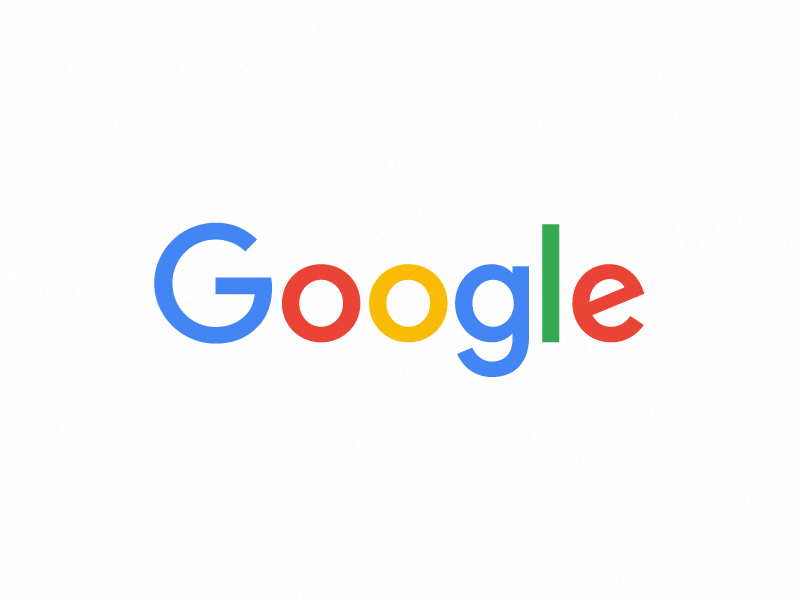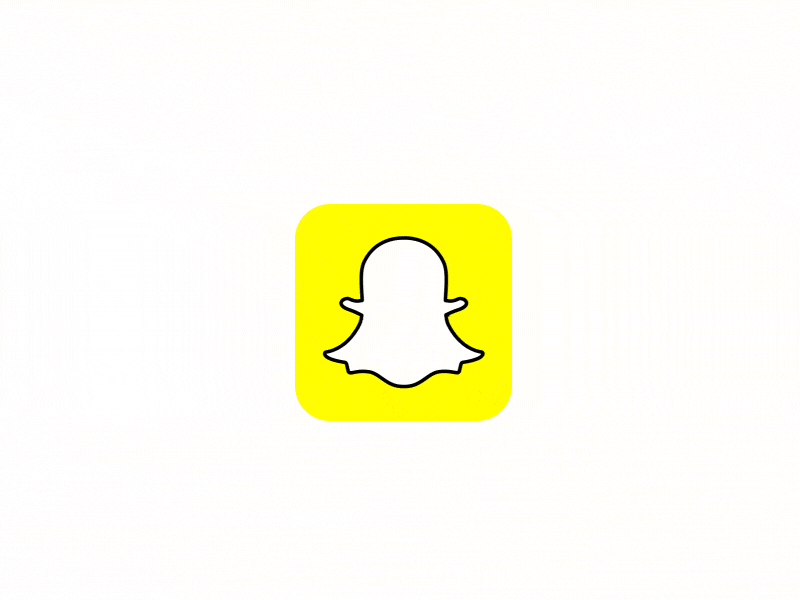
Illustrative logo designs have become increasingly popular in recent years, and they show no signs of slowing down in 2023 and beyond. These logo designs are characterized by the use of visual elements, such as illustrations or images, to represent a brand or company (Rafiq et al., 2020).
Illustrations allow a more creative and visually engaging branding approach. By incorporating imagery into the logo, businesses can convey their brand personality and connect with their target audience deeper.
What is an Illustrative Logo Design?
An illustrative logo is a type of logo that uses an image or graphic element to convey the brand’s message. These logos are typically more complex than other types of logos and can feature intricate designs, multiple colors, and unique fonts. Unlike other types of logos, illustrative logos use a visual element to represent the brand, rather than relying solely on text.
The image or graphic element used in an illustrative logo can be anything from an abstract shape to a detailed illustration. The key is that it should be unique and memorable, helping the brand to stand out in a crowded market. Here are some key reasons why illustrated logo designs work:
1. Incorporate elements that represent the brand or industry.
Uniqueness and Differentiation:
Illustrative logo designs offer a unique and distinct visual identity for a brand. By using illustrations, businesses can create a logo that stands out and sets them apart from their competitors. A well-designed, illustrated logo can become an iconic symbol of the brand, fostering brand loyalty and recognition.
For example, Airbnb’s logo features a distinctive, stylized illustration of a symbol that represents both a location marker and a heart. This illustrative logo embodies the brand’s mission of creating a sense of belonging and fostering connections between travelers and hosts.

If you look at a few top brands across the globe, you will realize that their symbols or icons have wide appeal. This is mainly because most of these companies incorporate unique elements into their brand identity designs. As a vital part of any forward-thinking business, brands must ensure that their logo not only helps you establish brand recognition but, importantly, makes your company stand out from the competition in a saturated market. But as you may know, everything starts with a plan.
It appears on everything from your website to your product packaging. It’s at the forefront of your branding, marketing strategies, and prospect acquisition. In other words, your logo reaches everyone who makes contact with your brand, usually as the first impression of what your business is all about.
Another example is Mailchimp’s logo, which features an adorable and whimsical illustration of a chimp, wearing a cap and sitting in a relaxed posture. This playful and illustrative logo reflects the brand’s approachable and fun personality while delivering email marketing services.

2. Use colors and typography to enhance the logo design.
Typography can create a visually appealing logo. By choosing an aesthetically pleasing font, viewers will remember the logo. Additionally, it is crucial to consider the font color, as this will ensure that the logo stands out from the crowd.
Telling a Story:
Illustrative logos excel at storytelling, allowing brands to communicate their values, narratives, and missions effectively. By incorporating visual elements that resonate with the target audience, illustrated logos create an emotional connection that goes beyond words. The key is to strike a balance between simplicity and complexity, capturing the brand’s essence while leaving room for interpretation.
A Custom Illustrative Logo designer will create your logo to creatively represent your business. It is a wise idea to have several logo designs designed before choosing one. The first is a simple logo, displaying the business name or a character. You can use that as a basis for developing your logo concept.
While there are many advantages to an illustrative logo, many purists in graphic design decry its use. Illustrator allows you to select from more than 16,000 font styles. You can also use CMYK or Pantone palettes for your logo and match printed colors. You can even scale the logo to any size you need. The possibilities are endless! With Illustrator, you can design a logo of any size, whether it’s for a small business or an international organization.
Using the right colors in a logo can create a strong, lasting impression on consumers. Bright, bold colors will draw attention and create an exciting, modern look. Meanwhile, muted, subtle colors project an air of sophistication and trustworthiness.
Importance of Visual Storytelling Logo:
In recent years, there has been a shift towards logos as visual storytelling tools. Businesses seek illustrative logo designs that convey their brand’s narrative, values, and personality. An illustration logo can evoke emotions and create stronger connections with target audiences.
3. Balance simplicity and complexity in the logo design
Simplicity and Versatility:
While illustrative logos embrace creativity, simplicity is essential. Logo design requires simplicity to be recognized and remembered. It cuts through visual noise and gets straight to the point. Think of the Nike Swoosh or Apple logo. These logos aren’t complex, but they’re instantly recognizable worldwide.
It should convey the business message and be easy to read and understand. Simplicity also makes it easier for potential customers to remember the logo. A simple logo can be used in various ways and easily adapted to different applications. Simple logos can help a brand grow with the business. A logo that is too complex may look dated quickly, while a simpler one can remain relevant for many years.
Simplicity – it’s a word we hear thrown around a lot in the design world and for the right reason. Simple designs are often the most effective, especially for logo design. Don’t let the word ‘simple’ fool you though; it doesn’t mean boring or uninspired. Quite the opposite. It’s about stripping away the unnecessary and focusing on what truly matters.
Enhanced Brand Recall:
Illustrative logo designs have a higher potential for creating memorable brand images. Recent studies show visual cues, such as illustrations, are more memorable and impactful than text-based logos. For example, Apple’s logo, with its iconic bitten apple illustration, is instantly recognizable and recognizable. In a study conducted by LogoDesignGuru (Sánchez et al., 2020), 65% of consumers are more likely to remember a brand if it has a distinctive and eye-catching logo. Consumers also identify brands by visual style (60%), brand color (45%), and unique voice (25%).

Fostering Emotional Connections:
Illustrative logo designs can evoke emotions and create a stronger emotional connection with the audience. Research has shown that people are more likely to form positive associations with brands with logos that elicit emotional responses. For example, Coca-Cola’s logo, with its classic script font and dynamic wave-like design, conveys joy, happiness, and nostalgia.
According to Reboot “91% of consumers can identify Google’s logo by only viewing its color palette”. Reboot found the answer to that question by showing 2,500 consumers color palettes of 10 famous brands.
Other brands quickly identified by color alone were McDonald’s (84%), Starbucks (80%), Facebook (73%), and IKEA (67%). Consumers struggled to identify Cadbury (31%), Harrods (22%), and Tiffany & Co. (17%).
Importance and Effectiveness of Illustrative Logo Designs
Illustrative logo designs play a crucial role in brand identity and can greatly impact company success. According to a study conducted by the Journal of Marketing Communications, logos are influential visual cues that can improve brand image and lead to more favorable brand attitudes. Logo design characteristics, such as color, symmetry, and illustrations, can significantly influence consumer perceptions of a brand. Research has shown that logos convey meaningful signals to consumers, primarily through their design characteristics. For example, illustrations in logo designs can communicate a brand’s values, story, and emotions in a visually appealing way.
Industry Insights of Logo Designing:
The logo design industry plays a critical role in shaping brand identities and establishing visual recognition for businesses worldwide. To understand the current trends and dynamics of this industry, let’s explore some key statistics and insights.

39% of Fortune 500 companies use blue as the main color in their logos. Black is less popular but still popular, with 25% of companies featuring black in their logos. 16% of companies use red as their main color.
According to a study, 94% of the world’s top brands have unique logos. This shows how significant it is to have a unique visual identity and how smart it is to invest in a well-designed logo.
As 99designs by Vista designer, solvi_designs, puts it, “Logos right now are funny and positive—I’m sure it was caused by the pandemic. People have had some tough years and some more to come, and the companies and designers are trying to give positivity in any way they can.”
Market Size and Growth:
The logo design industry has experienced steady growth over the past decade, driven by increasing demand for brand differentiation and online presence. As of 2021, the global graphic design market, which includes logo design services, was valued at approximately $42 billion. With the growing significance of branding, this market is expected to witness a compound annual growth rate (CAGR) of around 3.5% between 2021 and 2026.
The Dominance of Small Businesses:
Small and medium-sized enterprises (SMEs) form a significant portion of logo design clients. These businesses understand the importance of a well-crafted logo in establishing credibility and attracting customers. As a result, they actively invest in professional logo design services to create distinctive brand identities.
While big-name brands often have the most memorable logos, even small businesses, and startups need logos to establish their brand identity. With tight budgets, small business owners must get creative to find a logo that’s both affordable and appealing.
ZenBusiness surveyed 1,200 small business owners to determine the typical budget for logo design. 53.9% of respondents said their budgets were between $1 and $100. 20.5% said they had zero budget for a logo design. 19.2% said they’d be willing to pay between $100 and $500. Only 6.4% reported budgets of $500 or greater.
Prevalence of DIY Logo Design Tools:
While professional logo design services remain popular, the rise of do-it-yourself (DIY) logo design tools has also impacted the industry. These tools provide cost-effective solutions for startups and budget-conscious businesses to create basic logos independently. DIY tools often lack professional designers’ creativity and customization options.
Brand Redesign and Refresh Trends:
As businesses evolve, they often opt for logo redesigns or refreshes to stay relevant and modernize their image. In a survey conducted among marketing professionals, 68% of respondents expressed the need for logo updates every five years. This is to keep pace with changing market trends and consumer preferences.
Mobile and Digital Adaptation:
With the increasing use of mobile devices, logo designers are focusing on creating logos that adapt seamlessly to different digital platforms and screen sizes. Responsive logo design ensures consistent brand representation across various devices and enhances the user experience.
The 10 Biggest Illustrative Logo Design Trends for 2023!
As we look ahead to the future of logo design, illustrative logo designs are set to play a prominent role in shaping brand identities and captivating audiences. In 2023, several trends are expected to emerge, driving the evolution of illustrative logos. Let’s explore these exciting trends:
Storytelling Through Animation:
Illustrative logos are increasingly becoming dynamic and animated, allowing brands to tell captivating stories through motion. As technology advances, animated logos will gain popularity, providing a unique opportunity for brands to engage their audiences with visually compelling narratives. 81% of marketers say video increases sales.
Incorporating a video logo on your website is an effective way to achieve this, as it’s more likely to attract clicks and engagement. While motion graphic logos are popular on digital platforms, they may not be suitable for printed or packaged materials. However, you can easily create your own animated logo using free tools that offer 24 animation effects and a library of assets. Simplified provides one-click image effects like a text animator and image animator to make your animations stand out.
Thick-Lined Logos:

You can add complexity to your logo by changing the letter thickness. Logo designs in 2023 can be dynamic and quirky with minimal effort. Using thick, bold logos conveys strength and draws attention quickly. And heavy fonts can be an engaging tool for your logos if they align with your brand’s personality.
The key to incorporating logo design trends in 2023 like this is to ensure legibility.
3D Illustration Logos:
In 2023, we can expect a surge in the use of three-dimensional (3D) illustrations in logo design. 3D elements add depth, realism, and interactivity to logos, making them more visually engaging and memorable. With advancements in rendering technologies, creating intricate 3D illustrative logos will become more accessible to designers.

Mixed-Up Fonts Logos:
For 2023, brands no longer have to be constrained by typographic rules. Having a mix-and-match of fonts gives you more space to be creative and have a look different from the others. It’s simple and creative enough to grab attention. The logos have a touch of minimalism mixing not only the fonts but also the style of your logo.

Retro Logos:
Today, more brands use nostalgia in their logo design strategy to remind viewers of their glory days. When you see them, you are either reminded of your youth when you were a kid and only learning what these brands did, or you are nostalgic about a bygone era.
Check out Kodak. In 2016, they redesigned their logo to reflect their days as the king of photography. Recently, they have doubled down on retro marketing, releasing vintage-style apparel.

The marketing industry knows that vintage assets can be a good investment, especially after the pandemic. This is why Kodak brought back its 50-year-old logo and repositioned its upcoming products to leverage nostalgia.
Abstract Illustration Logos:
While realistic illustrations remain relevant, abstract and eclectic styles are expected to gain traction in 2023. These designs allow for more creativity and uniqueness, breaking away from traditional representations and enabling brands to stand out with unconventional yet impactful visuals.

Hand-drawn Logos:

In an era dominated by digital design, hand-drawn illustrative logos will make a comeback in 2023. Brands seeking authenticity and personal touch will turn to artisanal designs that showcase the skill and creativity of human craftsmanship.
Moving Logos
As we look towards 2023, logo design is evolving with the latest trends and techniques. One such shift is away from traditional design principles that prioritize readability above all else. Instead, designers are experimenting with incorporating motion elements into their logos to capture their audience’s attention. Studies have shown that our eyes are naturally drawn to movement, making fluid designs more impactful and attention-grabbing.

However, it’s important to note that moving logos may affect its readability. To address this issue, designers can limit the motion effect to the edges of the logo instead of applying it to the entire design. This allows for a dynamic and engaging logo while still maintaining its core purpose of communicating the brand’s message effectively. As design evolves, so too will the strategies and techniques used to create visually stunning and effective logos.
Minimalistic Illustrations:

Minimalism is a timeless design approach that continues to influence various art forms, including logo design. In 2023, illustrative logos will embrace minimalism, focusing on simplicity and clarity to convey a powerful message with just a few well-crafted elements.
Take, for example, Starbucks’ logo, which features a siren in the center. This symbol represents the maritime history of Seattle, where the company was founded. It also conveys a sense of adventure, discovery, and the relaxing experience of enjoying a cup of coffee.
Nature and Sustainability Logos:
As environmental consciousness grows, illustrative logos with nature and sustainability themes will become more prevalent. Brands will incorporate eco-friendly elements and nature-inspired illustrations to showcase their commitment to environmental responsibility.

Custom Typography Logo:
Custom typography will play a crucial role in enhancing illustrative logos in 2023. Brands will seek unique lettering styles that seamlessly integrate with illustrative elements, making their logos distinct and memorable.

Mascot Logos:
Using a mascot logo is a great way to give your brand a distinct character. This can take the form of a doodle, an illustration, or a simplified cartoon. A mascot logo helps to create a personality for your brand and gives customers a recognizable face to associate with your business. It can also make your brand more approachable and family-friendly, particularly if the mascot is designed with children in mind.

Examples of Brands Using Illustrative Logos:
Here are some examples of well-known brands that use illustrative logos to create unique and memorable brand identities:
Dropbox: Dropbox’s logo is a clever and minimalist illustration of a box with a flipped lid, forming an abstract “D.” This illustrative logo communicates the brand’s primary service of file storage and sharing in a simple yet creative manner.

Spotify: Spotify’s logo features a recognizable illustration of three sound waves forming an abstract S. This illustrative logo conveys the brand’s commitment to music and audio streaming services.

Pringles: The Pringles logo is an illustrative representation of Mr. Pringle, a fictional character with a mustache, in a bold and distinctive illustration. This illustrative logo has become an iconic symbol for the brand’s potato crisps.

These examples showcase how illustrative logos can effectively communicate a brand’s personality, values, and offerings, leaving a lasting impression on consumers and contributing to their success in the market.
Illustrative Logo Design: Tips and Tricks in 2023
Creating an effective illustrative logo design requires careful consideration and attention to detail. Here are some tips and tricks for successful illustration logo design:
Understand the brand: Begin by understanding the brand’s values, personality, target audience, and unique selling points. This knowledge will serve as a foundation for crafting an illustrative logo that accurately represents the brand. Keep it simple: Strive for simplicity in your design. Avoid overly complex illustrations that may be difficult to understand or lose impact when scaled down. A clean and straightforward logo design ensures clarity and memorability. Emphasize Brand Identity: The logo’s illustrative elements should align with the brand identity. Choose symbols, icons, or illustrations that resonate with the brand’s core values and communicate its essence effectively. Choose the Right Style: Consider the style that perfectly suits the brand’s image. Whether it’s minimalistic, playful, sophisticated, or vintage, the design should reflect the brand’s personality and appeal to the target audience. Tell a Story: Utilize visual storytelling to create an emotional connection with the audience. A well-crafted illustrative logo can convey a brand’s history, mission, or unique narrative, making it more memorable. Focus on Versatility: Design the logo to be versatile across various platforms and media. Ensure that it looks appealing and maintains its impact whether displayed on a website, social media, merchandise, or printed materials. Consider Negative Space: Cleverly use negative space within the illustration to add depth and hidden meaning to the logo. The use of negative space can create subtle and intriguing visual elements that enhance logo appeal. Test for Scalability: Ensure the logo looks great in different sizes, from large banners to small icons. Test it on various devices and platforms to ensure it remains recognizable and impactful in any context. Color Selection: Choose colors that evoke the right emotions and align with the brand’s identity. Colors shape perceptions, so select a color palette that complements the brand’s message. Seek Feedback: Throughout the design process, seek feedback from stakeholders, clients, or focus groups. Listen to constructive criticism and make the necessary adjustments to refine the logo. Professional Software: Use professional design software like Adobe Illustrator to create the logo in vector format. Vector files allow easy scalability without quality compromise. Intellectual Property: Ensure design originality and avoid copyright infringement. Perform a thorough search to make sure your illustrative logo does not resemble any existing trademarks or designs. Stay Timeless: Create a design that withstands time. While incorporating current trends can be tempting, a timeless logo will maintain its relevance for years to come.
By following these tips and tricks, logo designers can create illustrative logos that resonate with audiences. These logos can effectively communicate a brand’s message, and leave a lasting impression in consumers’ minds.
Optimize your Illustrative Logo Strategy to Make Your Brand Stand Out!
Illustrative logos hold immense power in visually communicating a brand’s story, values, and uniqueness. There’s no need to debate logo importance. For one, business logos, when created and used correctly, can give competitors an advantage. If used properly, a logo can be the most powerful instrument for communicating your brand image. Remember, your logo is the face of your brand – make it memorable and meaningful through illustrative Logo design.
Ultimately, the real essence of an illustrative logo comes from the quality of your products or services. It also emanates from how you operate and connect with the world. Lastly, a company logo is part of your overall marketing mix. Make sure to optimize your logo’s power in your campaigns.
Every brand-from local small businesses to multinational corporations—has its own logo. Behind each logo are careful considerations: design, font, color, cost, and time.
Old or updated, free or absurdly expensive, logos help shape the world we live in today. We interact with dozens of brand logos throughout our days, and while most are forgotten, some stay etched in our consciousness.
FAQ’s
Wrap Up!
In conclusion, the logo design industry continues to evolve in response to changing consumer behaviors and market dynamics. Businesses recognize the significance of well-designed logos in establishing strong brand identities, leading to sustained industry growth. As technology and design trends continue to advance, Illustrative logo designers must stay adaptable and innovative to meet the diverse needs of their clients. They must also create logos that resonate with target audiences in an ever-evolving marketplace.
Additionally, incorporating carefully researched keywords into logo design content can significantly improve online visibility and search engine rankings. By following best practices and providing valuable insights, logo design agencies can attract more potential clients and establish themselves as industry authorities.








